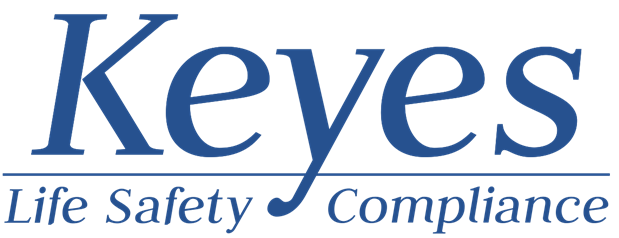
Your resource for expert Life Safety Code® and compliance insights.
Here you’ll find responses to readers' questions, interesting observations from the field, and more.
The world of healthcare compliance is constantly changing. Stay in the loop by subscribing to our free knowledge hub to get updates delivered right to your inbox.
Replace Old Smoke Detectors?
Whether addressable or conventional, there’s no code that mandates the replacement of a smoke detector so long as it’s sensing smoke per the manufacturer’s listed sensitivity range.
Fire Watch
If there are wet system sprinklers that protect below the suspended ceiling, plus dry system sprinklers located above in the attic space to protect above the drop ceiling, do I still need to conduct a fire-watch during construction?
More on Power Strips
As I read NFPA 99-2012, section 10.2.3.6, power strips used within the patient care vicinity must only be used on movable equipment assemblies that are rack-mounted, table-mounted, pedestal-mounted, or cart-mounted.
Power Strips
You cannot have only one type of power strip available for purchase and distribution throughout your healthcare facility.
Eyewash Stations
While the ANSI standard Z358.1-2014 is the standard to follow for the installation, testing, and maintenance of an eyewash station, it is not the standard to follow to determine when an eyewash station is required.
EPSS Circuit Breaker Test
For Level 1 Emergency Power Supply Systems, NFPA 110-2010, section 8.4.7 does require you to exercise the circuit breakers between the Emergency Power Supply (also called the generator) and the transfer switch load side on an annual basis.
Evacuation Route Maps
CMS, NFPA, and the accreditation organizations do NOT require evacuation route maps.
Storage Rooms
Section 19.3.2.1.5 (7) of the 2012 LSC says rooms or spaces that are larger than 50 square feet used for the storage of combustible supplies and equipment in quantities deemed hazardous by the AHJ are considered to be a hazardous area.
Operating Rooms as Hazardous Areas
Some AHJs will allow an OR to be classified as a hazardous area, and some will not.
Dietary Carts Left Unattended in Corridor
Food service carts would be used on floors of existing healthcare occupancies involving inpatients, where the corridors are required to be a minimum of 48 inches in clear width.
Actual Alarm Count as a Fire Drill?
An actual alarm on the fire alarm system may count as a drill, but only if you evaluate the response of the staff, the building, and the fire alarm system.
Looking for something specific?
Search for a keyword, phrase, or topic to narrow in on related results or select from the tag list below.
- Alcohol
- Alcohol Based Hand Rub Dispensers
- Batteries
- Business Occupancies
- Ceilings
- Circuit Breaker
- Clean Supply Room
- Corridors
- Data Closets
- Door Locks
- Doors
- Electrical
- Electrical Receptacle
- Emergency Lights
- Emergency Power
- Environment of Care
- Evacuation
- Eyewash Stations
- Facilities Management
- Fire Alarms
- Fire and Smoke Dampers
- Fire Caulk
- Fire Detection Systems
- Fire Doors
- Fire Drills
- Fire Extinguishers
- Fire Response
- Fire Suppression Systems
- Fire Watch
- Flammable Liquids
- Generators
- Hazardous Areas
- Healthcare Occupancy
- Humidity
- HVAC
- Inspection
- Interim Life Safety Measure (ILSM)
- Joint Commission
- Life Safety Code
- Maintenance
- MRI
- Negative Air
- New Construction
- NFPA 99
- Operating Room
- Oxygen Cylinders
- Patient Rooms
- Power Strips
- Risk Assessment
- Shower Curtains
- Signs
- Smoke Barrier
- Smoke Detectors
- Smoking
- Sprinklers
- Stairwells
- Storage Room
- Temperature
- Testing
- Testing and Inspection
- Vacuum Pump
- Waivers
- Wall Decals
- Waste Containers
- What Happened
